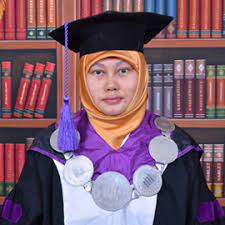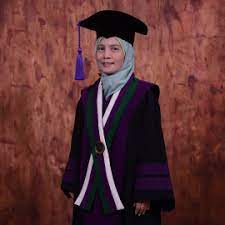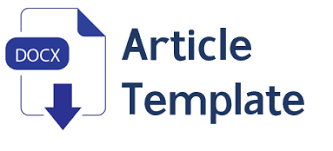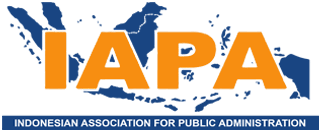POLA KOMUNIKASI CIVITAS AKADEMIK DALAM RUANG VIRTUAL DI MASA ADAPTASI KEBIASAAN BARU
DOI:
https://doi.org/10.30997/jsh.v12i2.4486Keywords:
computed mediated communication, communication patterns, online learningAbstract
The physical restriction policy by the Indonesian government during the COVID-19 pandemic has had significant implications for communication and information technology-based academic activities for educational institutions. The existence of interaction restrictions can inhibit the increase in the spread of the virus, but on the other hand the campus as an educational institution whose key activity is interaction must be able to adapt so that it can still carry out academic activities optimally. This study aims to examine two things in the scope of communication, namely communication patterns and communication barriers that occur within the scope of academic activities during the Enforcement of Community Activity Restrictions (PPKM). This study uses a qualitative method with case studies. To understand these communication patterns and communication barriers, we conducted in-depth interviews with the academic community of the University of Indonesia Education. The research findings show that to interact with lecturers and education staff, students can only communicate through the Learning Management System (LMS), whatsapp, and video teleconferencing. The interaction process often experiences obstacles so that it experiences misperceptions and late feedback. The conclusion of this study is that communication patterns in the academic community of the University of Indonesia Education are carried out through the medium of communication and information technology. This study also found three types of communication barriers that occur among the academic community, firstly technical barriers, secondly semantics, and thirdly psychological barriers. Further research will focus on testing the effectiveness of online learning on students' cognitive aspects.
References
Adiyanto, W. (2021). Memahami Hambatan Dosen Dan Mahasiswa Dalam Perkuliahan Online : Fenomena Antisipasi Penyebaran Virus Covid-19. Interaksi: Jurnal Ilmu Komunikasi, 9(2), 98–108. https://doi.org/10.14710/interaksi.9.2.98-108
Alfi, I., & Saputro, D. R. (2018). Hambatan Komunikasi Pendamping Sosial. Al-Balagh : Jurnal Dakwah Dan Komunikasi, 3(2), 193. https://doi.org/10.22515/balagh.v3i2.1397
Alqudah, N. M., Jammal, H. M., Saleh, O., Khader, Y., Obeidat, N., & Alqudah, J. (2020). Perception and experience of academic Jordanian ophthalmologists with E-Learning for undergraduate course during the COVID-19 pandemic. Annals of Medicine and Surgery, 59(June), 44–47. https://doi.org/10.1016/j.amsu.2020.09.014
Argaheni, N. B. (2020). Sistematik Review: Dampak Perkuliahan Daring Saat Pandemi COVID-19 Terhadap Mahasiswa Indonesia. PLACENTUM: Jurnal Ilmiah Kesehatan Dan Aplikasinya, 8(2), 99. https://doi.org/10.20961/placentum.v8i2.43008
Ariantini, I. P. D., Sudatha, I. G. W., & Tegeh, I. M. (2019). Berbasis Microlearning Pada Kelas Iii Sekolah Dasar Mutiara Singaraja Tahun Pelajaran 2018 / 2019. EDUTECH Universitas Pendidikan Ganesha, 7(1), 23–32.
Arnus, S. H. (2019). Pengaplikasian Pola Computer Mediated Communication (Cmc) Dalam Dakwah. Jurnal Jurnalisa, 4(1), 16–30. https://doi.org/10.24252/jurnalisa.v4i1.5618
Assyfa Putri, A. N., & Irwansyah, I. (2021). Efektivitas Komunikasi Dalam Pembelajaraan Online. Jurnal Teknologi Dan Sistem Informasi Bisnis, 3(1), 54–63. https://doi.org/10.47233/jteksis.v3i1.184
Briliana, C. N. N., & Destiwati, R. (2019). Pola Komunikasi Virtual Grup Percakapan Komunitas Hamur “HAMURinspiring” Di Media Sosial Line. Jurnal Manajemen Komunikasi, 3(1), 34. https://doi.org/10.24198/jmk.v3i1.12045
Cangara, H. (2007). Pengantar Ilmu Komunikasi. Raja Grafindo Persada.
Creswell, J. W. (2018). Research design: qualitative, quantitative, and mixed methods approaches. SAGE.
DeVito, J. a. (2008). The Interpersonal Communication Book. PsycCRITIQUES.
Dian Pratiwi, F., & Pendahuluan, Ms. A. (2014). COMPUTER MEDIATED COMMUNICATION (CMC) DALAM PERSPEKTIF KOMUNIKASI LINTAS BUDAYA (Tinjauan Pada Soompi Discussion Forum Empress Ki TaNyang Shipper). 7(1), 29–44. www.ask.com
Djamarah, S. B. (2004). Pola Komunikasi Orang Tua & Anak dalam Keluarga. Sebuah Perspektif Pendidikan Islam. Rineka Cipta.
Elzainy, A., El Sadik, A., & Al Abdulmonem, W. (2020). Experience of e-learning and online assessment during the COVID-19 pandemic at the College of Medicine, Qassim University. Journal of Taibah University Medical Sciences, 15(6), 456–462. https://doi.org/10.1016/j.jtumed.2020.09.005
Fitria Rochimah. (2020). Dampak Kuliah Daring Terhadap Kesehatan Mental Mahasiswa Ditinjau Dari Aspek Psikologi. PsyArXiv Preprints, 7. https://psyarxiv.com/s5m9r/
Hine, C. (2000). Virtual Ethnography. SAGE.
Indah, E. N., & Trihapsari, M. (2016). POLA KOMUNIKASI INTERPESONAL KEPALA MADRASAH TSANAWIYAH TRIDANA MULLYA KECAMATAN LANDONO KABUPATEN KONAWE SELATAN. Jurnal Al-Ta’dib, 9(2). https://doi.org/http://dx.doi.org/10.31332/atdb.v9i2.519
Jamalludin. (2016). Manfaat Media Komunikasi Dalam Pendidikan Dan Pembelajaran. Universitas Muhammadiyah Palembang, 1(1).
Kapriadi, P. R., & Irwansyah. (2020). IMPLEMENTASI COMPUTER MEDIATED COMMUNICATION DALAM DIGITAL STAFFING BERBASIS MOBILE APPLICATION DAN ONLINE PLATFORM DI PERUSAHAAN STARTUP Implementation of Computer Mediated Communication in Digital Staffing Based on Mobile Applications and Online Platfor. Kareba: Jurnal Ilmu Komunikasi, 382–399.
Karyono, E., & Prastiwi, S. K. (2018). Pengaruh Faktor Individual Dan Psikologis Terhadap Kinerja. Jurnal EKA CIDA, 3(1), 78–99. https://journal.amikomsolo.ac.id/index.php/ekacida/article/view/95/79
Kurniawan, D. (2018). Komunikasi Model Laswell Dan Stimulus-Organism-Response Dalam Mewujudkan Pembelajaran Menyenangkan. Jurnal Komunikasi Pendidikan, 2(1), 60. https://doi.org/10.32585/jkp.v2i1.65
Lestar, T. (2020). SURVEI PEMBELAJARAN DARING PADA MASA PANDEMI COVID 19 DI KAMPUS UPI CIBIRU. Berita.Upi.Edu. https://berita.upi.edu/survei-pembelajaran-daring-pada-masa-pandemi-covid-19-di-kampus-upi-cibiru/
Malik, M. S., & Mujtaba, M. A. ul. (2018). Impact of E-Recruitment on Effectiveness of HR Department in Private Sector of Pakistan. International Journal of Human Resource Studies, 8(2), 80. https://doi.org/10.5296/ijhrs.v8i2.12869
Munasinghe, S., Sperandei, S., Freebairn, L., Conroy, E., Jani, H., Marjanovic, S., & Page, A. (2020). The Impact of Physical Distancing Policies During the COVID-19 Pandemic on Health and Well-Being Among Australian Adolescents. Journal of Adolescent Health, 67(5), 653–661. https://doi.org/10.1016/j.jadohealth.2020.08.008
Mustofa, M. I., Chodzirin, M., Sayekti, L., & Fauzan, R. (2019). Formulasi Model Perkuliahan Daring Sebagai Upaya Menekan Disparitas Kualitas Perguruan Tinggi. Walisongo Journal of Information Technology, 1(2), 151. https://doi.org/10.21580/wjit.2019.1.2.4067
Nofrion. (2016). Komunikasi Pendidikan: Penerapan Teori dan Konsep Komunikasi dalam Pembelajaran. Kencana Prenada Media Group.
Putri, D. C. Y. (2021). Perkuliahan Daring di Masa Pandemi Covid-19. Jurnal PTK Dan Pendidikan, 6(2). https://doi.org/10.18592/ptk.v6i2.4151
Rahmawati, A. (2020). Analisis Hambatan-Hambatan Komunikasi Mahasiswa-Pembimbing Pada Masa Pandemi Covid-19 Analysing Communication Barriers Students-Supervisors in The Covid-19 Pandemic. Jurnal Spektrum Komunikasi, 8(2), 104–113.
Rakhmat, J. (2008). Psikologi Komunikasi. Remaja Rosdakarya.
Sadikin, A., & Hamidah, A. (2020). Pembelajaran Daring di Tengah Wabah Covid-19. Biodik, 6(2), 109–119. https://doi.org/10.22437/bio.v6i2.9759
Saladino, V., Algeri, D., & Auriemma, V. (2020). The Psychological and Social Impact of Covid-19: New Perspectives of Well-Being. Frontiers in Psychology, 11(October). https://doi.org/10.3389/fpsyg.2020.577684
Suranto, A. (2011). Komunikasi Interpersonal. Graha Ilmu.
Thurlow, L., & Lengel, A. T. (2004). Computer Mediated Communication, Social Interaction and The Internet. SAGE.
Tracy, M., Norris, F. H., & Galea, S. (2011). Differences in the determinants of posttraumatic stress disorder and depression after a mass traumatic event. Depression and Anxiety, 28(8), 666–675. https://doi.org/10.1002/da.20838
Zhang, D., Zhao, J. L., Zhou, L., & Nunamaker, J. F. (2004). Can Elearning Replace Classroom Teaching. Communiations of the ACM, 47(5), 74–79.
Downloads
Published
How to Cite
Issue
Section
License
Copyright (c) 2021 Jurnal Sosial Humaniora

This work is licensed under a Creative Commons Attribution-ShareAlike 4.0 International License.
Authors submitting manuscripts must understand and agree to copyright the manuscript of the article was transferred to OJS Djuanda University. All rights reserved. The copyright release statement for the Journal of Social Humanities is set out in the Agreement Transfer of Copyright. This work is licensed under Creative Commons Attribution-ShareAlike (CC BY-SA) version 4.0 where Author and Readers can copy and redistribute material in any media or format , as well as mixing, modifying and building materials for any purpose, but they must provide appropriate credit (citing articles or content), provides a link to the license, and indicates when changes have been made. If you mix, modify, or develop, the materials you have to distribute your contributions are under the same license as the originals.
















